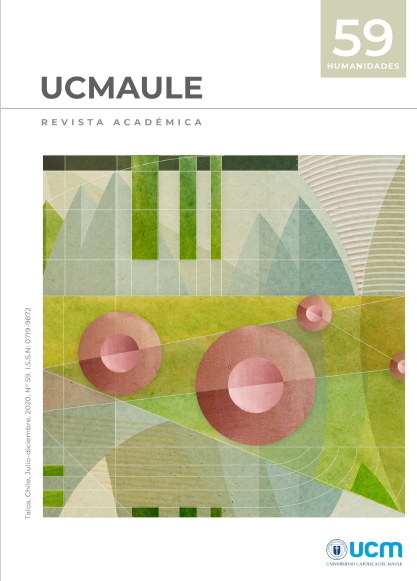Armstrong, N. & Welsman, J. R. (2007). The Contribution of Physical Activity and Sedentary Behaviours to the Growth and Development of Children and Adolescents. Implications for Overweight and Obesity. Sports Medicine, 37(6), 1067-1086. DOI: http://doi.org/10.2165/00007256-200737060-00006
Caspersen, C; Powell, K; Chisterson, G. (1985). Physical activity, exercise and physical fitness: definitions and distinctions for health related research. Public Health Rep. 100(2): 126 -131.
Campo A. & Oviedo H. (2008) Propiedades Psicométricas de una Escala: la Consistencia Interna. Rev. Salud pública. 10 (5), 831-839. Recuperado de https://www.redalyc.org/pdf/422/42210515.pdf
Crocker, P. R., Bailey, D. A., Faulkner, R. A., Kowalski, K. C., & McGrath, R. (1997). Measuring general levels of physical activity: preliminary evidence for the Physical Activity Questionnaire for Older Children. Med Sci Sports Exerc. 29: 1344-1349. DOI: http://doi.org/10.1097/00005768-199710000-00011
Escalante, Y. (2011). Actividad física, ejercicio físico y condición física en el ámbito de la salud pública. Revista Española de Salud Pública, 85(4), 325-328. Recuperado de http://scielo.isciii.es/scielo.php?script=sci_arttext&pid=S1135-57272011000400001&lng=es&tlng=es
Faúndez, C., Vásquez, J., Castillo, Marcelo, E., Souza, R., & Castillo, F. (2019). Entrenamiento interválico aeróbico y de fuerza muscular en funcionarios universitarios obesos con ECNT: un estudio piloto. Nutrición clínica y Dietética Hospitalaria, 39(1):179-183. DOI: http://doi.org/10.12873/391faundez
Garcia, I., Muñoz, M., López, G., Gil, B., Puertas. M & Gómez, A. (2019). Validación de un cuestionario sobre actitudes y práctica de Actividad Física y otros Hábitos Saludables mediante el método Delphi. Revista Española de Salud Pública, 93(16), 1-12.
Gobierno de Chile. (2017). Recomendaciones para la práctica de actividad física según curso de la Vida. Gobierno de Chile.
Gómez, R., Fuentes, J., Puño, L., de Arruda, M., & Cossio, M. (2016). Reproductibilidad de un cuestionario que valora la actividad física en adolescentes escolares de altitud. Salud Uninorte. Barranquilla, 32(1), 95-104.
Janz, K. F., Dawson, J. D., & Mahoney, L. T. (2000). Tracking physical fitness and physical activity from childhood to adolescence: the muscatine study. Medicine and Science in Sports and Exercise, 32(7), 1250-1257. DOI: http://doi.org/10.1097/00005768-200007000-00011
Kowalski, K., Crocker, P., & Donen, R. (2004). The Physical Activity Questionnaire for Older Children (PAQ-C) and Adolescents (PAQ-A) Manual. Canada.
Lobstein, T., Baur, L., & Uauy, R. (2004). Obesity in children and young people: a crisis in public health. Obesity reviews, 5(1), 4-85.
Manchola-González, J.; Bagur-Calafat, C. & Girabent-Farrés, M. (2017). Fiabilidad de la versión española del cuestionario de actividad física PAQ-C. Revista Internacional de Medicina y Ciencias de la Actividad Física y el Deporte 17(65), 139-152. DOI: http://dx.doi.org/10.15366/rimcafd2017.65.008
Martínez, D., Martínez, V., Pozo, T., Villagra, A., Calle, M., Marcos, A. & Veiga, O. (2009). Reliability and validity of the PAQ-A questionnaire to assess physical activity in spanish adolescents. Revista Española de Salud Pública, 83(3),427-39. DOI: http://doi.org/10.1590/s1135-57272009000300008
Miller, Y. (2004). Physical activity measurement in children by parental self-report. NSW Department of Health. Centre for Physical Activity and Health. Report No. CPAH 04-0001. NSW Center for Physical Activity and Health. Recuperado de https://www.health.nsw.gov.au/surveys/other/Documents/CPAH-Physical-activity-measurement-in-children-by-parental-self-report.pdf
National Center for Chronic Disease Prevention and Health Promotions, Centers for Disease Control and Prevention. (1997). Guidelines for school and community programs to promote lifelong physical activity among young people. The Journal of School Health, 46(6), 1-36.
Organización Mundial de la Salud. (2010). Recomendaciones mundiales sobre actividad física para la salud. Organización Mundial de la Salud.
Parasuraman, A., Zeithaml, V. & Berry, L. (1988). SERVQUAL: a multiple-item scale for measuring consumer perceptions of service quality. Journal of Retailing, 64(1). 12-37.
Perula de Torres, L. A., Lluch, C., Ruiz, R., Espejo, J., Tapia, G., & Mengual, P. (1998). Prevalencia de actividad física y su relación con variables sociodemográficas y ciertos estilos de vida en escolares cordobeses. Revista Española de Salud Pública, 72(3), 233-244. Recuperado de http://scielo.isciii.es/scielo.php?script=sci_abstract&pid=S1135-57271998000300008
Riddoch, C. J., Bo Andersen, L., Wedderkopp, N., Harro, M., Klasson-Heggebø, L., Sardinha, L. B…. Ekelund, U. (2004). Physical activity levels and patterns of 9- and 15-yr-old European children. Medicine and Sciences in Sports and Exercise, 36(1), 86-92. DOI: http://doi.org/10.1249/01.MSS.0000106174.43932.92
Sánchez, F., Campos, A., Vega de Carranza, M., Cortés, O., Esparza, M., Galbe, J., Gallego Iborra, A., García, J., Pallás, C., Rando, Á., San Miguel, M., Colomer, J. & Mengual, J. (2019). Promoción de la actividad física en la infancia y la adolescencia (parte 1). Pediatría Atención Primaria, 21(83), 279-291. Recuperado de http://scielo.isciii.es/scielo.php?script=sci_arttext&pid=S1139-76322019000300019&lng=es&tlng=es
Serón, P., Muñoz, S. & Lanas, F. (2010). Nivel de actividad física medida a través del cuestionario internacional de actividad física en población Chilena. Revista médica de Chile, 138(10), 1232-1239. DOI: https://dx.doi.org/10.4067/S0034-98872010001100004
Treuth, M., Hou, N., Young, D., Maynard, L. (2005). Validity and Reliability of the Fels Physical Activity Questionnaire for Children. Medicine and Science in Sports and Exercise. 37(3), 488-495. DOI: http://doi.org/10.1249/01.mss.0000155392.75790.83
Vidarte, J., Vélez, C., Sandoval, C. & Alfonso, M. (2011). Actividad física: estrategia de promoción de salud. Hacia la Promoción de la Salud, Volumen 16(1), 202-218.
Welk G. (2002). Physical activity assessment in health-related research. Human Kinetics.


 https://orcid.org/0000-0003-4501-4169
https://orcid.org/0000-0003-4501-4169
